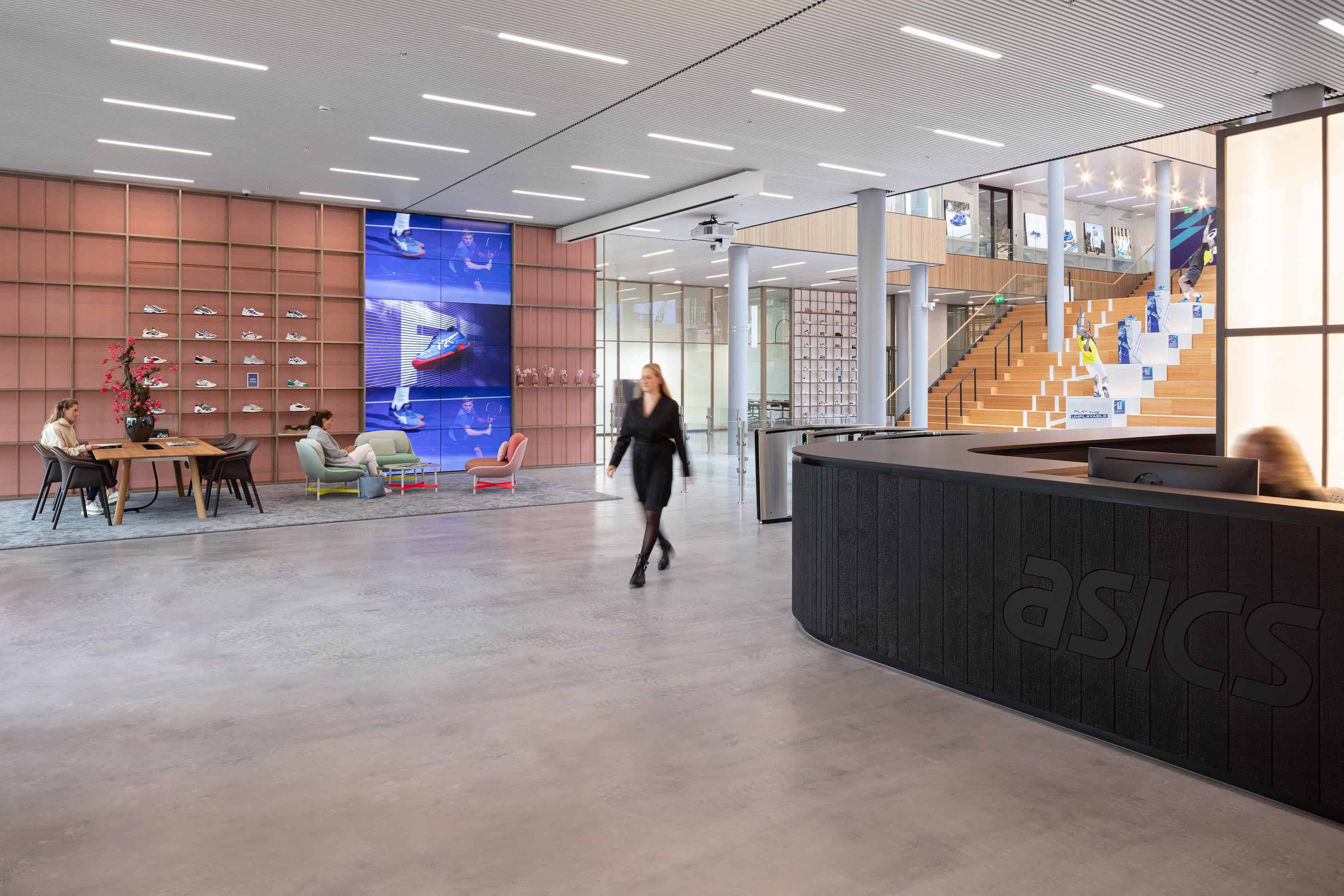Journal
Interior Branding: Why It Matters
Behind every physical space is a brand. And whether you want it or not, visitors will immediately make this connection when they step through the door. Let’s take a closer look at branding and its role in interior design.
The power of interior branding
Bernd Schmitt, the author of ‘’Experiential marketing’’, notes that brands are encoded in physical environments, whether you want it or not. Every location where people interact with your brand, be it an office or a shop, makes a certain impact on them. And if these spaces are designed with little or no consideration of the brand values, you are depriving yourself of the opportunity to shape the experience that people are going through.
“Value does not only reside in the object of consumption (products and services) and in seeking out and processing information about such objects; value also lies in the experience of consumption.”
Through interior branding, you can use a physical space to communicate a message about the company behind it. In other words, interior design is a tool to change the way people feel about the brand when they step through the door.

Brand identity as a starting point
Think of any brand. What are the first associations that come to your mind? Probably, it’s a company name, a logo, certain colours and slogans. All these elements do make a brand, but there is something else to it. And this ‘something’ is what truly matters.
Every big brand is unique in its visual expression, yet all of them have one thing in common. They evoke a certain response, a reaction. Big brands create experiences. Definitely, their logo wouldn’t be so memorable, if not backed by hundreds of other details linking to it. A cohesive brand identity is a combination of both visual and experiential factors working together to give people an idea of what a company stands for.
The power of brand identity can hardly be overestimated. The question is - how to make it work. First of all, it is essential to realise that brand identity doesn’t exist without consistency. It goes beyond physical or digital space. The “personality” of a brand should be present in everything and everywhere. And physical spaces are of great importance here. These touchpoints should support each other in order to maximise the effect they have on visitors.
Translating brand identity into interior design
But, why is it so important to translate brand identity into interior design? The thing is, brands don’t exist separately from the real world. People need to encounter the brand in every possible way in order to build up that association in their head. And it’s not about putting a logo on every wall and matching the furniture with brand colours. Rather, it’s about creating a space that speaks for itself. The interior should be synonymous with your brand; so that people could walk in blindfolded and still be sure where they are. The recognisable style, familiar smells and the atmosphere they experience only here. As Paul Rand put it:
“Design is the silent ambassador of your brand.”
When people encounter your brand in daily lives, the environment you create affects their emotions and behaviour. And through interior design, you can determine which associations you want to evoke.
_2.jpg?width=2184&name=de-vorm-office-ditt-newday-offices-almere(3)_2.jpg)
People, in this case, are not only customers. Employees are as important. How do they feel when entering the office? Every brand knows that they should work towards outstanding customer experience, but does the employee experience receive as much attention?
It definitely should. Office design has so much to offer - it can boost employee satisfaction, attract talents and encourage teamwork. Additionally, interior branding can show people what their employer cares about. If sustainability is the core value, it should be translated into green office design. The office is the face of your company; it should be the ultimate reflection of the corporate culture and vision. The task of an architect is to capture the ‘core’ of this culture and interpret it into the interior. And that’s often a challenge.
Surprisingly, the internal perception of the company image might be quite different from what is communicated to the outside. Elizabeth Vereker, design director of Studio O+A, says that the core of the brand identity lies in between the internal culture and the external image:
“One of the biggest challenges in working with a brand is helping the client understand the difference between their external and internal brand. Through our visioning phase, we work to differentiate between those voices to uncover the core of a brand’s culture. It is this core, rather than a set of standards, logos, or tag lines, that we build a space around.”
The reflection of the brand in space creates a branded environment. This can be done using certain materials, colours, textures, furniture, lighting and smells. The next article will tell you how to make a brand stand out in interior design.



.jpg?width=487&name=Square_duotile_De%20Vorm%20AK%20Soft%20Distancing%20originator%20(1).jpg)
